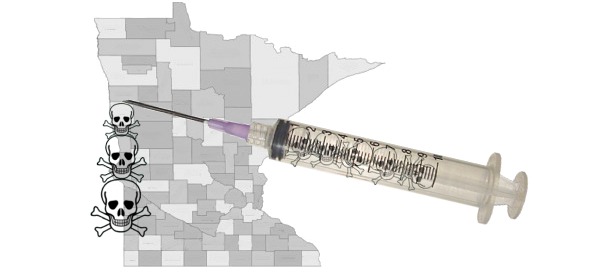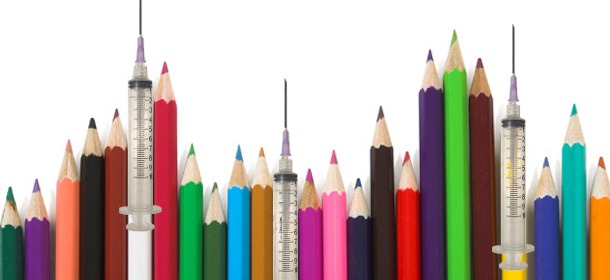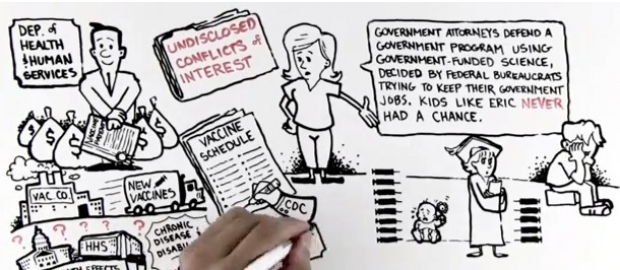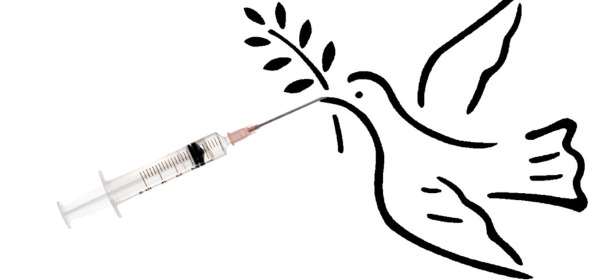Diseases/Conditions
Phthalates: Lack of Regulation and Protecting Yourself
Phthalates are highly toxic and they’re virtually everywhere. We literally breathe them in! Here is information about the lack of adequate regulation and how you can limit your exposure.
Read Part 1 Phthalates: Likely Cause of Diabetes and Obesity – and They’re Everywhere!
by Heidi Stevenson
Phthalates Regulation
Our regulatory agencies have been utterly remiss in dealing with phthalates.
In 2008, the EU Commission produced a document[2] that virtually whitewashes several chemicals, including Di-(2-ethylhexyl) phthalate. Statements include:
HUMANS EXPOSED VIA THE ENVIRONMENT: there is at present no need for further information and/or testing or for risk reduction measures beyond those which are being applied. This conclusion is reached because the risk assessment shows that risks are not expected. Risk reduction measures already being applied are considered sufficient.
HUMAN HEALTH: there is at present no need for further information and/or testing or for risk reduction measures beyond those which are being applied. This conclusion is reached because the risk assessment shows that risks are not expected. Risk reduction measures already being applied are considered sufficient.
ATMOSPHERE, AQUATIC ECOSYSTEM and TERRESTRIAL ECOSYSTEM:there is at present no need for further information and/or testing or for risk reduction measures beyond those which are being applied. This conclusion is reached because the risk assessment shows that risks are not expected. Risk reduction measures already being applied are considered sufficient.
The US’s EPA is making a show of regulating phthalates, but the reality doesn’t seem to bear out the image. Their documentation[3] speaks of intent to regulate, rather than actual regulation. They have announced:
EPA intends to initiate rulemaking in autumn 2010 to add these eight phthalates to the Concern List under TSCA section 5(b)(4) as chemicals that present or may present an unreasonable risk of injury to health or the environment. [Emphasis mine.]
EPA also intends to initiate rulemaking in late 2010 to add the six phthalates not already on the Toxics Release Inventory (TRI). [Emphasis mine.]
In preparation for rulemaking in 2012 under TSCA section 6(a), EPA intends to cooperate with the Consumer Product Safety Commission (CPSC) and the Food and Drug Administration (FDA) to more fully assess the use, exposure and substitutes for these chemicals. [Emphasis mine.]
EPA may consider pursuing additional rulemaking under TSCA section 5(a)(2) in late 2010 or early 2011 to require manufacturers and processors of DnPP to notify EPA before manufacturing or processing DnPP for a significant new use. [Emphasis mine.]
EPA intends to conduct a Design for the Environment and Green Chemistry alternatives assessment by 2012. [Emphasis mine.]
It’s 2012, and this is the current status of the EPA’s website on phthalates regulations. It’s all about intentions, but no action seems to have been taken. The EPA’s recent history and conflicts of interest[4,5,6] should not give us much hope for protection from these toxic chemicals. The agency has decided to require approval for new applications of phthalates[7], which sounds good—but it does nothing about existing phthalate use and it doesn’t actually say anything about how they would regulate. They just say that they will.
Obviously, the health of people is taking second place to corporations’ profits in both the US and EU.
Protecting Yourself from Phthalates
To be blunt, it’s virtually impossible to completely avoid phthalates. They are, literally, in the environment everywhere—in the air, water, and even in food. They’re in cosmetics, cleaning products, and the containers that hold them. They’re in soft vinyl toys, vinyl floorings, vinyl mini blinds, wallpaper, wood finishes, shower curtains, and in the air in rooms that contain them. They’re in wood finishes, perfume, hairspray, soap, shampoo, moisturizers, nail polish, food packaging, plastic wrap, lubricants, adhesives, plumbing pipes, insecticides, medical devices, and much more.
We eat phthalates, we drink phthalates, we soak them in through our skin, and we breathe them. They are everywhere. However, you can limit your exposure, but it will mean doing without a lot of modern conveniences. Here are some things you can do:
- Avoid using most baby care products. Many, if not most, modern baby care products contain these toxic agents.
- Avoid plastic containers as much as possible, and particularly avoid storing food in them. Plastic wraps also contain phthalates. Use glass and stainless steel containers instead.
- Avoid products with fragrances added. Most contain phthalates.
- In the US, you can limit—but not eliminate—phthalate exposure from plastics by using only those that carry the numbers 1, 2, 4, and 5 in the triangle symbol.
- Do not microwave anything in plastic containers or with plastic film on top! (Better yet, don’t use microwave ovens, as they destroy nutrients.)
- Cans (tins) are nearly always lined with phthalate-laced plastic to avoid that “tinny” taste. Avoid canned foods as much as possible.
- Polymer clays contain phthalates. Do not let your children play with them.
- Food purchased from stores often are wrapped in plastics. You can help limit your exposure to phthlates from these products by scraping a thin layer off the tops of plastic-wrapped foods. (This, of course, is not always practical, but is often effective in meat and cheese.)
- Paint with natural paints, and if you can’t, always make sure the room is well ventilated while painting and drying. Solvents, too, should be used only in well-ventilated areas.
- Air fresheners, even fragrance-free ones, nearly always contain phthalates.
- Read labels! Although phthalates are not always included on labels, you can avoid a lot of them by looking for these ingredients:
- DBP (dibutyl phthalate)
- DNOP (di-n-octyl phthalate)
- DiNP (diisononyl phthalate)
- DEP (diethyl phthalate)
- BBzP (benzyl butyl phthalate)
- DEHP (di 2-ethylhexl phthalate)
- DiDP (diisodecyl phthalate)
- DnHP (di-n-hexyl phthalate)
- DMP (dimethyl phthalate)
- DnOP (di-n-octylphthalate)
- BPA (bisphenol A)
Phthalates are not chemically bound to the plastics containing them. As a result, even tiny amounts are dangerous because they separate from the plastics so readily. Millions of tons of phthalates are produced every single year. They truly are ubiquitous.
Do not become complacent when you learn that some phthalates are being restricted. There is a huge number of them, so restricting a few doesn’t make you safe.
Blaming the Victims
 As ever, people who suffer from diabetes are blamed for their disease. The association with excess weight is real, though not absolute, but the suggestion that people simply choose to become fat is not only cruel, it’s absurd. The rise in obesity and diabetes parallels that of many changes in the modern world, including phthalate pollution and toxicity in everyday objects and materials, along with changes in the very nature of the food we eat. There are good reasons to believe that both of these items, along with others, are changing our metabolism.
As ever, people who suffer from diabetes are blamed for their disease. The association with excess weight is real, though not absolute, but the suggestion that people simply choose to become fat is not only cruel, it’s absurd. The rise in obesity and diabetes parallels that of many changes in the modern world, including phthalate pollution and toxicity in everyday objects and materials, along with changes in the very nature of the food we eat. There are good reasons to believe that both of these items, along with others, are changing our metabolism.
Some chemicals are known to be estrogen mimickers, causing gender-bending fish and all sorts of damage to wildlife. Phthalates, along with other endocrine disruptors, must be assumed to disrupt metabolism, making people crave food and even put on weight at lower calorie intakes.
A cycle of dieting to lose that excess weight—which generally encourages rapid weight loss—results in lowering the metabolism, thus reducing the number of calories required to survive and making future dieting ever more difficult.
How many people in this situation got that way because their metabolism was altered by phthalates? We don’t know—but we do know that it’s a likely scenario for millions of people today who have or are heading for diabetes.
If our health care system and health protection agencies actually cared about our health, they’d stop focusing on placing the blame on victims. Instead, they’d focus on the causes. Fifty years ago, few people were fat. It’s absurd to suggest that so many are now obese because they’re lazy or eat badly. There are many reasons for their affliction, and blaming them for having obesity induced by the garbage sold in supermarkets and the omnipresence of phthalates accomplishes nothing positive, beyond building the egos of those who were blessed with a more resistant metabolism.
Fat Man photo by Emilio Labrador (filter used).
Sources:
- [1]Urinary Phthalate Metabolite Concentrations and Diabetes among Women in the National Health and Nutrition Examination Survey (NHANES) 2001-2008; Environmental Health Perspectives; Tamarra James-Todd, Richard Stahlhut, John D. Meeker, Sheena-Gail Powell, Russ Hauser, Tianyi Huang, Janet Rich-Edwards
- [2]Commission communication on the results of the risk evaluation and the risk reduction strategies for the substances: Piperazine; Cyclohexane; Methylenediphenyl diisocyanate; But-2yne-1,4-diol; Methyloxirane; Aniline; 2-Ethylhexylacrylate; 1,4-Dichlorobenzene; 3,5-dinitro-2,6-dimethyl-4-tertbutylacetophenone; Di-(2-ethylhexyl)phthalate; Phenol; 5-tert-butyl-2,4,6-trinitro-m-xylene
- [3]Phthalates Action Plan Summary
- [4]EPA accused of conflict of interest over chemicals study
- [5]EPA’s Topsy-Turvy Definition of Conflict-of-Interest
- [6]EPA chief denies conflict-of-interest allegations
- [7]Rules Proposed to Limit New Uses of Potentially Harmful Chemicals / EPA also calls for additional testing on health and environmental impacts of PBDEs
- [8]About phthalates (Our Stolen Future)
- MEHP/DEHP: gonadal toxicity and effects on rodent accessory sex organs.
- Reproductive and developmental toxicity of phthalates.
- Statement of the Scientific Panel on Food Additives, Flavourings, Processing Aids and Materials in Contact with Food on a request from the Commission on the possibility of allocating a group-TDI for Butylbenzylphthalate (BBP), di-Butylphthalate (DBP), Bis(2-ethylhexyl) phthalate (DEHP), diIsononylphthalate (DINP) and di-Isodecylphthalate (DIDP)
- Phthalates
- Phthalates (Environmental Working Group)
- How to Avoid Phthalates In 3 Steps
- Phthalates (Tox Town)
- Phthalates: What you need to know
- Phthalates found in everything from toys and clothes to paints, cosmetics, and electronics
- Phthalates (Toxipedia)
- What’s the difference between Phthalates and Parabens?
- Statistics About Diabetes
Tagged bbzp, blaming the victims, blaming the victims of diabetes, bpa, dbp, dehp, dep, didp, dinp, dmp, dnhp, dnop, phthalate toxicity, phthalates, phthalates diabetes, phthalates epa, phthalates eu, phthalates health, phthalates obesity, phthalates regulation















Pingback: Phthalates: Likely Cause of Diabetes and Obesity – and They’re Everywhere! | Gaia Health
Pingback: EPA okays BPA, disses public’s right-to-know » Banoosh
Pingback: EPA okays BPA, disses public’s right-to-know | Food Freedom News
Pingback: EPA okays BPA, disses public’s right-to-know | Thought FTW
Pingback: EPA Okays BPA, Rejects Public’s Right-To-Know